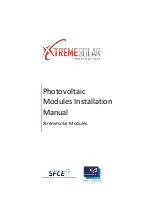
3 Safety instructions
3.4 Device-specific hazards
16
XP-503 01/2017 MN048014 EN www.eaton.com
3.4
Device-specific hazards
Danger
Explosion hazard
Death, serious injury, and property damage may occur if the device is being used in
a potentially explosive (classified) location and, during operation, an electrical plug
connection is disconnected or the device is exposed to dangerous impacts or other
types of dangerous mechanical shock.
Use the device in the following environments only:
- Non-hazardous (non-explosive) area
- Hazardous (explosive) area, zone 22 (as defined in the ATEX Directive),
only device type:XP-503-15-A10-A01-1B (184582)
XP-503-10-A10-A01-1B (184926)
XP-503-21-A10-A01-1B (184927)
The ground resistance of accessible metal parts must be less than 10
9
ohms.
Make sure that the device is not exposed to dangerous impacts and other types
of dangerous mechanical shock.
De-energize the device before disconnecting plug connections.
Clean only with a clean soft antistatic damp cloth
When used in a potentially explosive atmosphere, zone 22
The XP-503-…-A10-A01-1B are designed for installation in the front of enclosures
in protection type "tc" (alternatively "ta" or "tb"). This installation must be tested and
certified separately. The maximum surface temperature at the outer surface is set to
70°C at the maximum ambient temperature of 50°C. The environment has to be
designed to avoid any bunch discharge. For safe installation, comply with the
specification to holding brackets and tightening torque in the Instruction Leaflet.
WARNING
Live parts inside the device
When the device is open, there will be an electric shock hazard if live parts are
touched.
Do not open the device if it is not de-energized.
WARNING
Stray currents
Large transient currents between the protective circuits of different devices may
result in fire or in malfunctions due to signal interference.
If necessary, route an equipotential bonding conductor, with a cross-sectional
area that is several times larger than that of the cable screen, parallel to the
cable.
















































